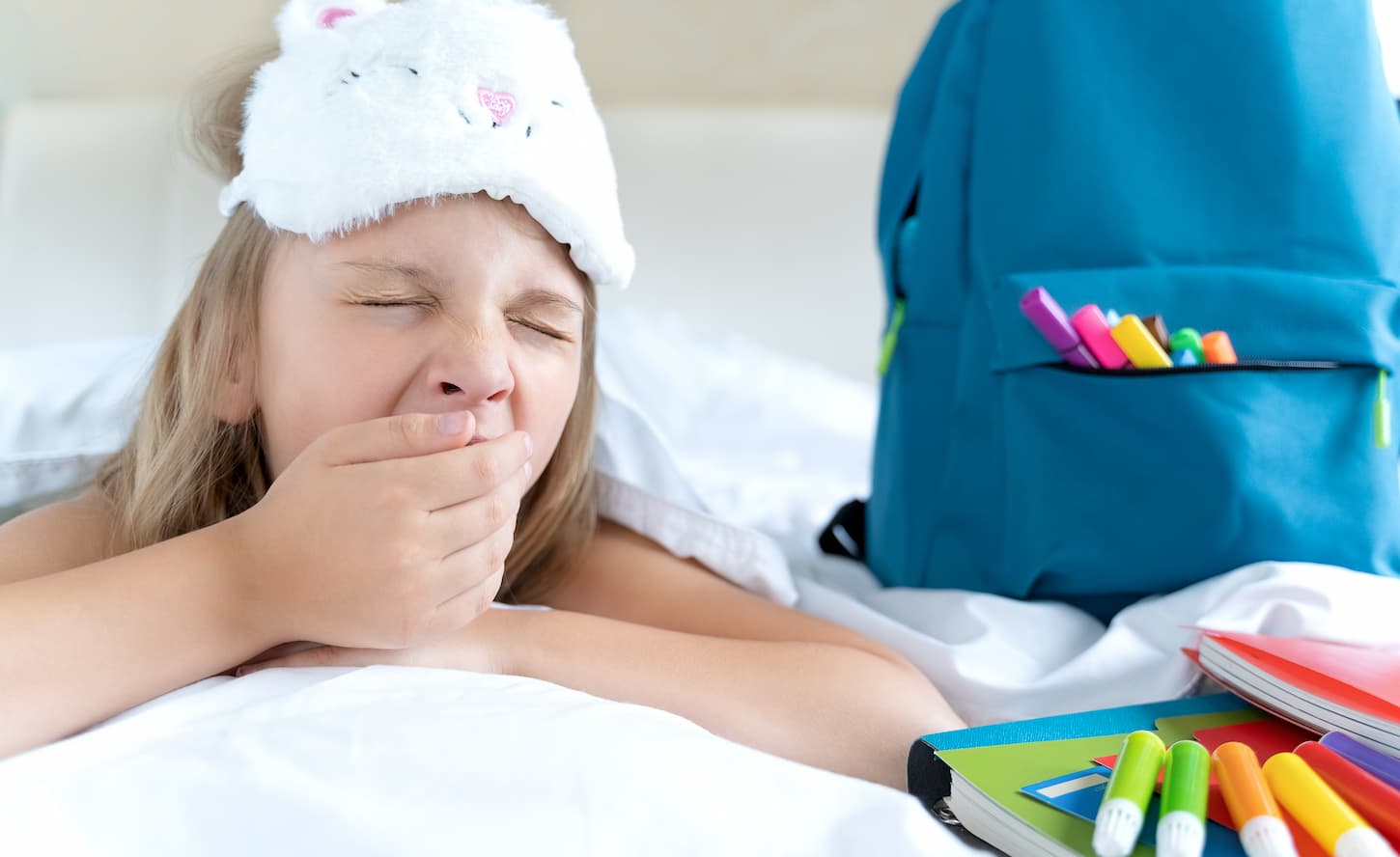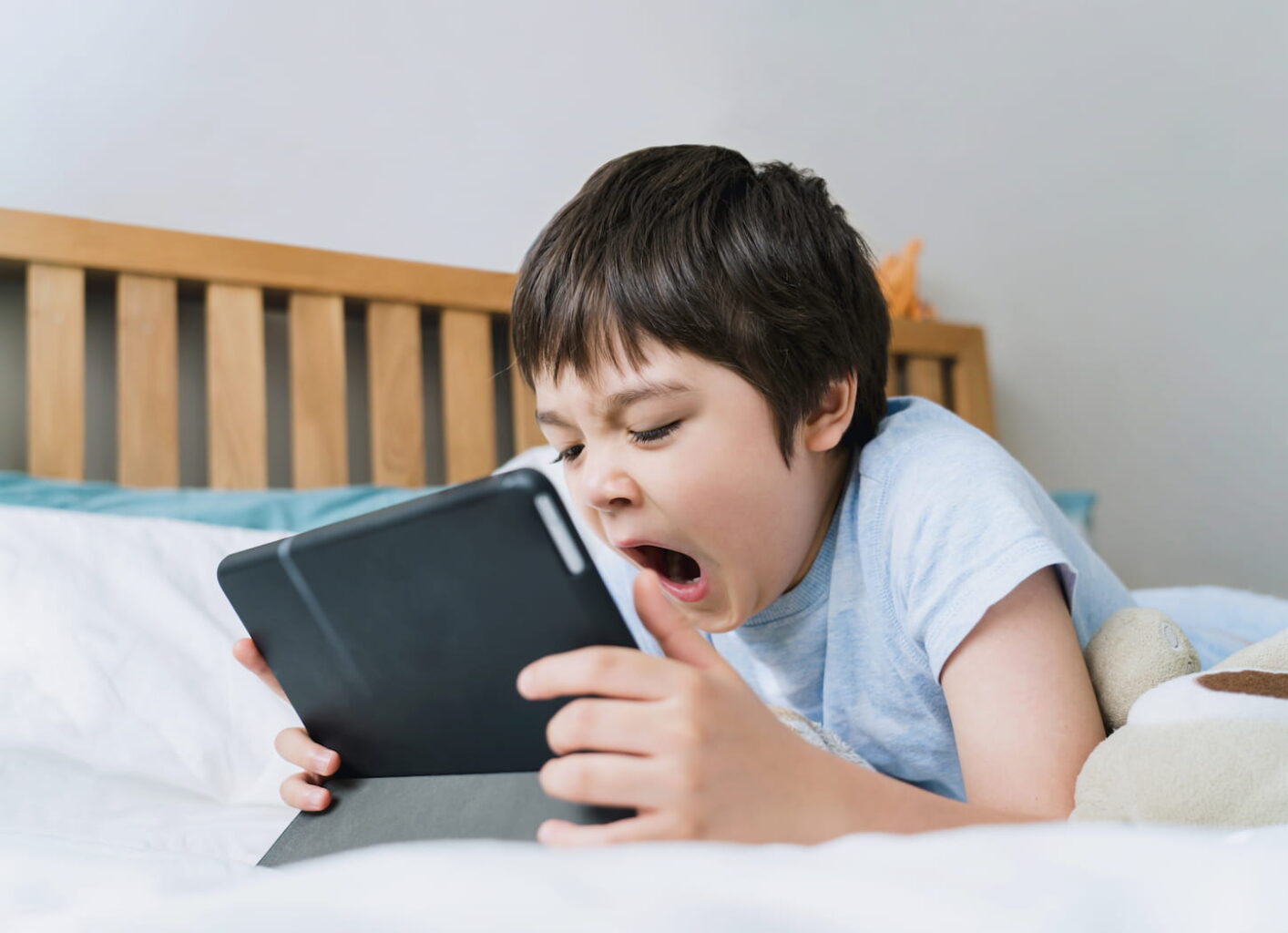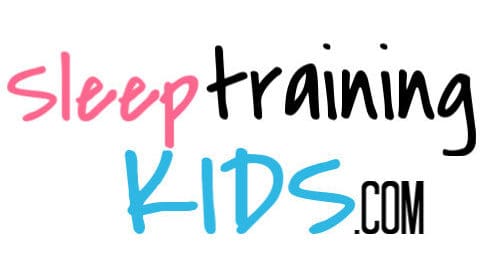Last night as I was putting my two youngest children to bed, I was so thankful we had used behavioral sleep training to help them sleep better. Then I began to wonder what would have happened had we waited until they were bigger to sleep train, so I did some research.
Is sleep training big kids possible – and how do you do it? Sleep training big kids is possible with behavioral sleep training, provided you adjust things for their age by:
- Talking more to your children about what’s happening;
- Making things fun;
- Giving your kids a measure of control by supplying choices.
With all of my research, I realized that I’m still sleep training my kids – it’s just changed how it looks. So let’s talk about it – keep reading!

How To Adjust Sleep Training for Big Kids
Sleep training big kids (toddlers, preschoolers, and even grade-school-aged children) will very naturally look quite different than sleep training a baby.
The biggest change is going to be taking into consideration their development as a person – and their age. In other words, bigger kids have opinions, they like to know what’s going on, and they want it to be fun.
So, let’s make those adjustments to sleep training:
- Talk to your children about what to expect with sleep training.
- Make sleep training more fun for your child.
- Give your child some control by supplying them with approved choices at bedtime.
- Change the sleep training plan to be age-appropriate.
Examples are always good, so let’s break things down.
| Adjustment For Big Kids | Reasoning | Example 1 | Example 2 |
|---|---|---|---|
| Talk About Sleep Training. | Help everyone know what to expect by talking about what will happen and what the expectations are. | Talk about sleep training in a family meeting. | Introduce sleep training by practicing. |
| Make Sleep Training Fun | This allows you to talk about what will happen and make it fun. | Stage a dress rehearsal several hours before bedtime. | Start practicing bedtime for several nights before “officially” starting. |
| Give Choices | Children are far more likely to be engaged if they get to help make choices. So give them two approved options and let them choose. | 5 minutes before bed, ask your child, “Do you want to go to bed now and have extra snuggle time or do you want to play for 5 more minutes?” | “Do you want to wear this pair of pajamas or this other pair?” |
| Make Sleep Training Age Appropriate | Trade “fading” for “breaks.” With an infant, you can leave without explaining what’s going on. With a big kid, explain that you need a quick break – and that you’ll be back in a few minutes. | After tucking in your child, lay down next to them for a few minutes. Then, announce a 2-minute “break” before coming in and praising them for staying in bed. | After tucking in your child, let them know that you’ll check on them in 10 minutes – then do so. |
The older your children are, the more specific you’ll be able to be with your expectations of them.
Just for reference, here are our expectations of our children for sleeping:
- Once it’s bedtime, you are expected to stay in bed.
- The overhead lights will stay off.
- You may read or rest quietly in bed.
- You will stay in bed until your alarm clock says it’s time to get up (unless you need to go potty and you’re potty trained – then go potty and get back in bed).
- Once we all get up, we expect everyone to be pleasant and enjoy breakfast together.
Those are our expectations. Nowhere in there is it listed that we expect our children to sleep. We sure hope they do, but it’s ultimately their choice.
Now, we do expect our children to be pleasant in the morning. So if they want to be pleasant, they ought to choose to go to sleep. But if they choose to stay up, they’re welcome to do so – they just still need to be pleasant in the morning.
Sleep Training Methods That Do Not Work For Big Kids
So, knowing that we need to adjust things for our bigger kids to successfully sleep train, are there any methods that just won’t work? The answer is yes – there’s one method that doesn’t work.
The sleep training method that doesn’t work with big kids is pure extinction, or cry it out.
Important note: pure extinction isn’t a behavioral sleep training method. As such, it’s a method that has not been deemed safe for any age group by any available scientific literature.
So why doesn’t cry it out work with big kids? It doesn’t work because it doesn’t account for their age or opinions.
For example, if I tried to use cry-it-out sleep training on my 4-year-old, he could throw a fit that lasted for hours. He can get out of his bed; he can trash his room. He can talk and scream and share what he thinks of everyone. And he can get out of his room. He wouldn’t learn to sleep by crying it out. He would learn how to keep up with his siblings and cause general mayhem.
Just thinking about that kind of scenario stresses me out. I can only imagine how awful that would be to go through in real life. So don’t try using cry it out on big kids.
5 Best Sleep Training Methods For Toddlers, Preschoolers, and Older Big Kids
So what are the best ways to sleep train older children? Let’s go over 5+ methods you can use right now to help kids sleep better.
| Behavioral Sleep Training | Methodology – Adjusted For Big Kids |
|---|---|
| Graduated Extinction | Parents gradually delay their response to a child’s calls for another drink, potty breaks, another story, etc. |
| Controlled Comforting | Parents physically comfort their child as needed, though the length and type of comfort gradually diminish. |
| Adult Fading | A parent gradually stays less and less time with a child after putting them down for bed. |
| Camping Out | “Camp out” in the kid’s room after bedtime. Each night, move your chair one step further from the bed. Eventually, you won’t need to be in the room. |
| Pick Up, Put Down | Hug your child as needed to help them calm down. Take breaks to help them need less help to calm down. |
And here is one of the best things about these methods… you can mix and match them! There is a good bit of overlap between them, so if you want to get creative and combine parts of them, you can do it. Or if you’d rather stick to just one specific method, that’s fine, too.
They all work – we’ve tried each of them with our big kids. And our kids love that bedtime is more fun, kid-focused, and full of cuddles.
Finally, let’s address some of the factors that can impact sleep training – and what to do about them.

What To Do About Factors That Influence Big Kids’ Sleep Training (And Sleep)
Looking back, there are only a few things that can impact a baby’s sleep – and thus their sleep training. At least, it seems a whole lot easier than the new things that become issues as my kids get older.
Here are some of the common factors that can affect big kids’ sleep, as well as what you can do about them.
| Sleep Disruption | Common Causes | What To Do About Them |
|---|---|---|
| Anxiety | Excessive worry about any topic, especially school | Talk to your child about anxiety and help them learn to manage it. |
| Bad Dreams | Scary movies, too many rich foods before bed | Keep a journal to see if your child has any bad dream triggers. Eliminate those triggers as possible. |
| Apnea (Snoring) | Enlarged adenoids and tonsils, childhood obesity | For enlarged tonsils and adenoids, consult an ENT (ear, nose, throat doctor). For childhood obesity, talk to your doctor for options and focus on living a healthier lifestyle. |
| Stimulating Foods or Medicines | Drinking or eating caffeine, taking depression medicines at night | Many children are consuming caffeine, which can keep them up at night. Furthermore, check prescription medicines. Some prescription medicines for depression may cause wakefulness, so those should be taken in the morning rather than at night. |
| Too Much Screen Time | Devices emit a light that can confuse our sleep-wake cycles. | Either install a nighttime light filter on your device or set a device-free time for at least 30 minutes before bed to keep sleep on track. |
| Not Enough Exercise | Inadequate exercise can limit sleep quantity and quality | Encourage your children to be active and outside for at least 30 minutes each day. Our pediatrician says, “There’s no such thing as bad weather if you dress appropriately. Get your kids outside and moving each day!” |
| Illness | Germs | Help your child recover. Use appropriate medicines and props to manage symptoms so that they can get the best rest possible while ill – while getting everyone back to healthy and normal sleep patterns as soon as possible. |
| Sleepwalking | Sleep deprivation, sedative agents, illness, medications | Focus on good sleep hygiene. In many cases, that eliminates the problem. If your child has sleepwalking symptoms, talk to your doctor to evaluate for any underlying conditions that could be triggering it. |
| Night Wakings (Sleep Regressions) | Stress, family or life changes, time changes, schedule disruptions, vacations | Focus on good, quality sleep. These disruptions are temporary and sleep quality should improve once the disruption ends. |
| Restless Legs | Iron deficiency, diabetes mellitus, kidney problems, anxiety, underlying condition | Because there are so many different causes of RLS, it’s important to talk to your doctor. That way, the underlying medical condition can be addressed properly. Often, just doing this helps improve the restless leg syndrome. |
Now, you probably won’t experience many of the above issues while sleep training your big kid. But if you do, you’ve now got the resources you need to succeed.
You’ve got this!
Related Questions
How Old Should You Start Sleep Training? Babies can be successfully sleep trained once their brains have developed enough that they’ve settled into a more adult sleep pattern. This usually happens by 4-6 months old.
How Long Should Baby Cry It Out? You can allow your baby to cry for a few minutes (up to an hour) for sleep training purposes as long as your baby’s physical needs are met and they are safe.
Will Sleep Training Harm My Baby? When done properly, sleep training is perfectly safe and will not harm your baby. To read my analysis of the scientific literature that talks about the safety of sleep training, click here.
